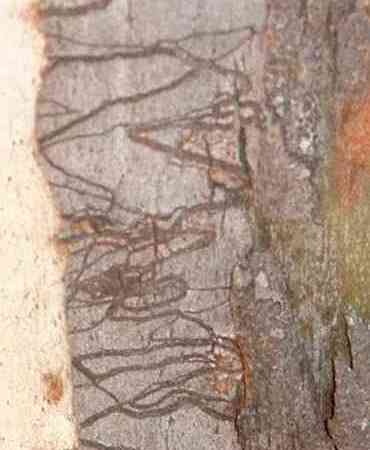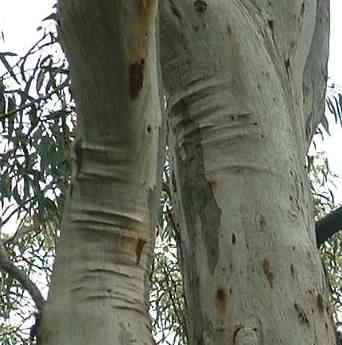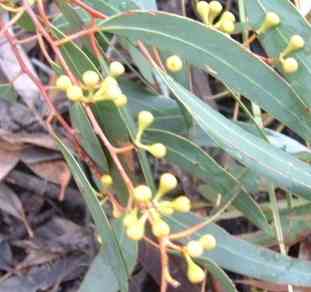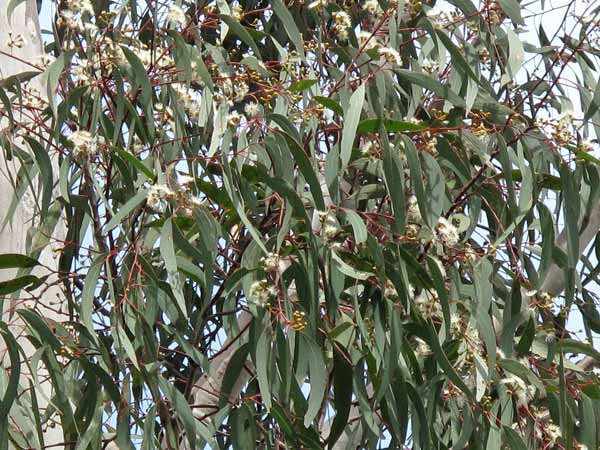
Ogmograptis scribula on an E. rossii
Eucalyptus rossii is commonly known as “Scribbly Gum” (but beware! there are at least three other NSW eucalypt species locally known as Scribbly Gum). The story of the scribbles, caused by the larvae of the moth Ogmograptis scribula, follows.
One good easy distinguishing character of E. rossii is the prevalence of ‘pressure wrinkles’ on the trunk below the major branches.


E. rossii is a tree of dry hillslopes, and is the commonest tree in Aranda Bushland. Its violet flowers, in umbels of five to 10, appear in December and January.
The wavy scribbles on the trunk of the Eucalyptus rossii (and which in fact give the tree its common name of Scribbly Gum) are the work of a very seldom seen insect. Ogmograptis scribula ( “the wavy writing scribe”) is a tiny moth, only 1 to 2 mm long which lays its eggs between the old and new bark of E. rossii.

It is very selective, and in the immediate Canberra region it is most unusual to see scribbles on any other tree species. In the higher parts of the ACT however, E. pauciflora (Snow Gum, or White Sallee) is so adorned, as are other species elsewhere.
Why two thicknesses of scribble?

On hatching, the larva of the Scribbly Gum Moth tunnels between the layers of bark; the tunnels are only exposed when the old bark layer falls off. Like other insects (along with other invertebrates, as well as reptiles) Ogmograptis cannot stretch its skin as it grows. Instead, when its body gets too great to be contained in its old skin, that skin splits and the grub emerges in a new skin, a size larger! This growth by steps is evidenced in the sudden size increases we can see in the diameter of the tunnels.
In December the grub pupates, although we are not even certain whether this takes place on the tree or in the ground. Pupation is the process whereby the larva spins a thread cocoon or chrysalis, within which its body literally breaks down into a “soup” of components, and reconstitutes into an adult insect. “By its works shall we know it indeed, since larva, pupa and moth are very rarely seen, though the signs of their life are known to everyone who has set foot on Aranda Bushland.
The text is an adaptation from “Black Mountain A Walkers Guide” Canberra & South East Region Environment Centre, 1981.
